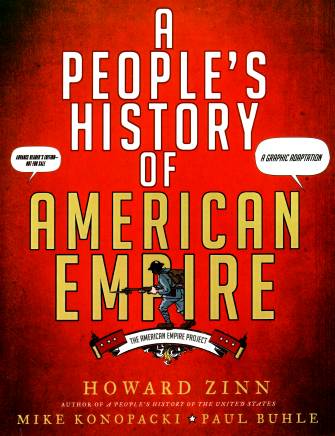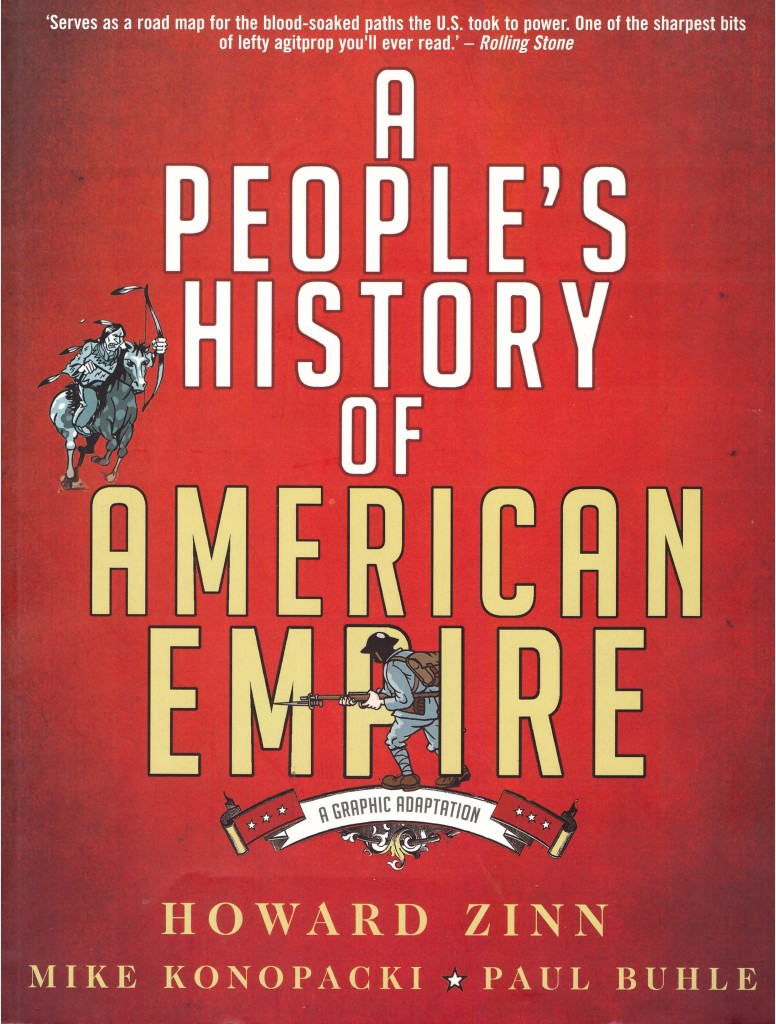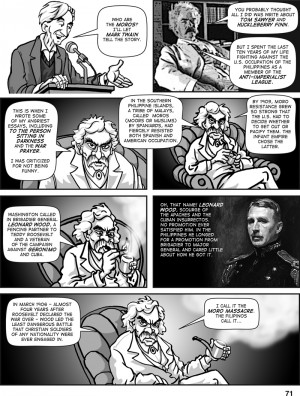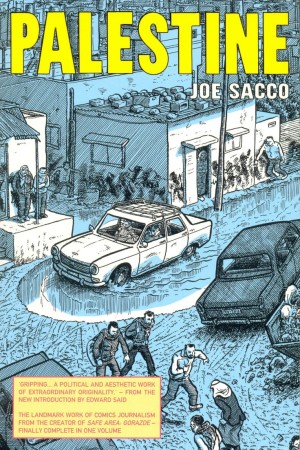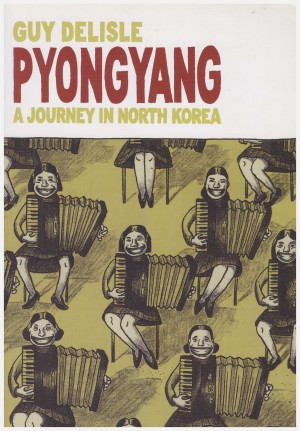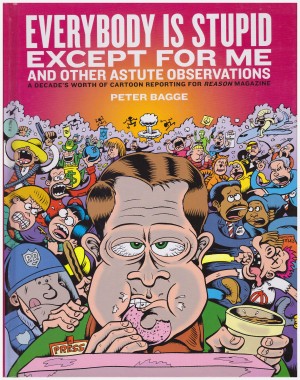Review by Frank Plowright
First published in 1980, Howard Zinn’s text version of A People’s History of the United States was an attempt to present a different history of the USA. It didn’t glorify political leaders, but presented the country’s history as it was lived by ordinary people over the centuries. When it came to the overseas influence of the USA there was no justification of the unjustifiable, and it instead pointed the finger toward the graves on which foreign policy was built. It’s primarily this section of the book adapted as A People’s History of American Empire.
Historian Paul Buhle is cover credited and recognised as an author, but his exact contribution is difficult to define as his own introduction identifies the otherwise uncredited Dave Wagner as developing the script from Zinn’s text, from which artist Mike Konopacki worked.
The presentation is novel and interesting, primarily comic strip, but mixing in photography and documentation for a richer visual experience. It uses a cartoon avatar of Zinn as a commentator, and starts with quotes from an essay considering the events of September 11th 2001, Zinn noting that the response wasn’t informed by the lessons of history. The book goes on to explain exactly how, first moving back to the past, detailing how the USA was formed by wiping out the indigenous population, and far from being the land of the free, plutocrats have gradually subverted democracy.
The villains highlighted range from the shameless to the ignorant. George Pullman used the excuse of a depression to reduce his rail company wages by 25% in 1894. When it was pointed out he was able to increase shareholder dividends he responded that was because he ran a successful company. That form of capitalism has been the heart of US foreign policy since the late 1800s, supporting the most vile dictators on the basis that it’s better ordinary people are suppressed than business interests.
Zinn being used as guide isn’t mere whim. Not only are his works extremely quotable, but his World War II experiences feed into the appalling situation of fundamentally decent men just following orders. The horrific use of napalm was documented in Vietnam, but it had been used toward the end of World War II, then as later indiscriminate in its targets, and Zinn was among pilots who deployed it without understanding the consequences. As well as detailing the US abuses around the world we learn of the deceit and manipulation employed to sustain it. Occasionally this is in itself a revelation. In 1962 the case for invading Cuba was justified in government documentation by citing 103 “interventions” between 1798 and 1895 as precedent.
Aspects of A People’s History of American Empire are magnificent, not least the emphatic and irrefutable content missing from school text books. There are also drawbacks. Konopacki can draw, but has a very basic design sense, and there are few occasions when he really brings the material to life. A lesser complaint is the very scattershot manner of presentation. It’s chronological, but rapidly expands from overseas iniquities to encompass labour disputes, intimidating methods used by government to cover-up their deeds, the treatment of wartime conscientious objectors and more. A light shone on the abuse of power is very welcome, but for non-linear consultation the index is essential.
Much can be learned from this easily digestible counterpoint to the lies and propaganda still told, so A People’s History of American Empire is very important and very welcome, and the publication date fading further into time won’t make it any less so.
